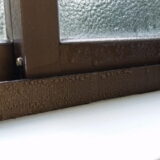 Our mid-winter maintenance routine helps keep your home safe, comfortable and operating efficiently.
Our mid-winter maintenance routine helps keep your home safe, comfortable and operating efficiently.
It can also save you money in the long run because attending to small, less expensive matters now helps prevent them from mushrooming into big, costly ones in the future.
Our 10 easy-to-do tasks include handy links for more information and DIY tips. If you need a professional to help out, check our directory of reliable maintenance, repair and service companies in the Ottawa area.
1. Filter fixes
Furnace filters need to be checked and either cleaned or replaced regularly. Furnace efficiency and indoor air quality depend on clean filters. While you’re at it, check your heat recovery ventilator (HRV) filter, cleaning or replacing as necessary. See our tips on these and other DIY maintenance tasks.
2. Fire extinguishers
Are they fully charged, in good repair and in the right place? Learn more here.
3. Heating ducts
Make sure heat is going where it’s supposed to go by checking your ductwork for holes, leaks and other problems: complete guide here. While you’re at it, clean the duct covers in all the rooms in your home; vacuuming and a bit of soap and water will generally do the trick, as this article explains. Despite what those annoying telemarketers say, routine duct cleaning is usually an unnecessary expense, according to the U.S. Environmental Protection Agency.

4. Condensation
Cold weather can bring condensation problems on windows and skylights, leading to mould growth and other issues. Check these handy hints for warding off condensation and dealing with mould if it occurs.
Extra tips: If condensation occurs, opening your curtains and blinds and all your interior doors will increase airflow and reduce the conditions causing condensation.
5. Fresh air
Speaking of windows, it may seem unwise because it’s cold out, but occasionally opening your windows for a few minutes when it’s not too cold helps your home to “breathe”, letting the stale indoor air escape and fresh outdoor air to come inside (it’s not enough to simply open and close a door). If you have an HRV, you’ll automatically get this important exchange of air, but if you don’t, this is an easy way to clean the air.
6. Roofs in winter
Snow and ice build-up at this time of the year can wreak havoc with your roof. Carefully remove the build-up and remember to check for ice dams on roof overhangs. If the build-up is severe, call a roofer. Periodically check your roof for missing or damaged shingles and flashing that’s not fully sealed. More details here.
7. Keep these clear
Make sure air intakes, exhausts and meters are clear of snow so they can work properly. In general, you should make sure snow is not piled against your home, and that snowbanks are far away from the house. The last thing you want is to have that snow melting and trying to make its way into your house.
8. Refrigerator
Your fridge’s condenser coils should be cleaned about every six months, and more often if you have pets that shed a lot. The coils help your fridge to cool more efficiently, but when they get caked with dirt, dust, pet hair and more, they can’t do their job properly. Most coils are accessed from the front, but some are at the back. Here’s a video that shows how to do it.
Extra tip: This is also a good time to clean and organize your fridge. You’d be surprised at how many out-of-date items can accumulate.
9. Exhaust fans
Check and clean your exhaust fans. Often, giving them a quick vacuum is enough. If your exhaust fan does not have enough power to hold a tissue in place, it needs cleaning.
10. GFIs
GFIs or GFCIs (ground fault circuit interrupters) are a type of circuit breaker that shut off electric power to prevent a shock when they sense an imbalance between the outgoing and incoming current. They’re often found in outlets near sinks, exterior outlets or at the main electrical panel and while they’re a great safety feature, they can be a hassle when they’re not working properly. Checking them is simple: push the “test” button to hear a click, indicating the circuit has been tripped. This pops out the “reset” button, which you can then push to re-activate the outlet.
Originally published Jan. 4, 2019.
Got a maintenance task you’re not sure how to do?
Drop us a line at info@allthingshome.ca or message us through Facebook.


